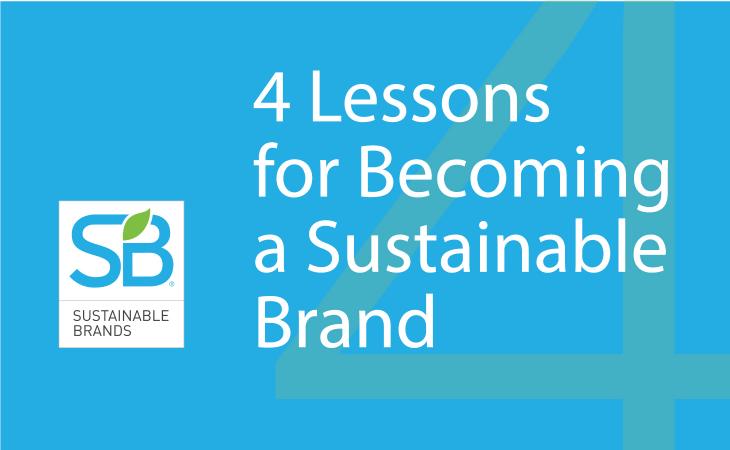This website uses cookies so that we can provide you with the best user experience possible. Cookie information is stored in your browser and performs functions such as recognising you when you return to our website and helping our team to understand which sections of the website you find most interesting and useful.
News
4 Lessons for Becoming a Sustainable Brand
At Sustainable Brands 2016 (SB ’16), business leaders, brand managers, and sustainability experts came together to discuss a path forward to a more sustainable future. And the Vinyl Institute was there.
A key aim of the conference was to give businesses strategies and concrete steps they can take to bake sustainability into their operations and to communicate wisely about their efforts. We’ve talked about the process a bit here and here. At SB ’16, we heard more about hotspots, and lifecycle assessments, and the companies that are walking the walk.
Here are our top takeaways.
Purpose-driven is the new green.
The focus of the conference was on being “purpose-driven,” which makes the term the latest buzzword in a revolving door of terms to describe being sustainable. The good news is that purpose-driven sustainability is backed up by a broader and more inclusive definition of what it means to be sustainable.
Where “green” has typically been about the environmental aspects of sustainability, purpose-driven in the SB ’16 context also encompasses the social and economic aspects — when a company strives to be financially successful by making a positive difference in society through its products, services, and operations. It acknowledges that being more sustainable will require companies to develop a balanced approach that involves better environmental and natural resources stewardship, economic sense, and social due diligence.
What also sets this purpose-driven approach apart? The appeal to emotion. According to speakers and participants alike, being purpose-driven is about thinking in terms of saving the planet (as opposed, say, to “saving water”) and then engaging employees across an organization and an industry toward a common goal.
Your purpose can’t be an add-on item.
The second key takeaway from SB ’16 is that sustainability can’t be siloed. Rather, it must be embedded across the organization so that it becomes a way of doing business. This means that companies need to move away from having sustainability goals to having a strategy that is incorporated into your overall business strategy. This isn’t checklist greenwashing but instead a long-term, iterative movement to becoming a more sustainable brand.
Not every product has to be a “sustainable” product.
While it’s important to have a sustainability strategy, that doesn’t mean every product or service has to be marketed as such. Sometimes you need to pick and choose.
Coca-Cola, for example, received considerable pushback from consumers over its “polar bear” effort to tie its flagship product to climate change and donations to the World Wildlife Fund. KFC, for its part, got into trouble over its “Buckets for the Cure” initiative.
The solution: look for products and use cases where marketing your sustainability efforts make sense. Ask:
- does it make sense for our brand?
- is it the right message for consumers?
- is it the right message for shareholders?
- how does this campaign/message/initiative tie back to what the company is doing overall?
For example, CVS received praise for removing all tobacco products from its pharmacies. This was a $2B hit to their bottom-line. The company’s decision was timed to coincide with its purchase of a prescription benefit management company and the roll-out of walk-in clinics. In other words, stopping cigarette sales played into the company’s focus on healthier people.
Beware of regrettable substitution.
Our final major takeaway is a cautionary one: you have to pay attention to the unintended consequences (or, rather, think through all the consequences) of making changes to what goes into a product or what happens when you select one material versus another. You want to avoid regrettable substitutions.
A regrettable substitution happens when you replace one thing (e.g., a chemical, a material) in order to achieve another goal. In the sustainability conversation, this could mean substituting a non-PVC flooring material in place of vinyl flooring. While you might get green points from some corners, the lessened durability and service life means you have to replace that product far more often. Is that really sustainable?
Becoming a truly sustainable and purpose-driven brand or industry isn’t easy, but it’s increasingly a business imperative for two reasons. First, there will be 9.7 billion people on Planet Earth by 2050 – and if we don’t do something now we’ll need three planets of resources just to feed, clothe, and house everyone. Equally important is that younger consumers, especially millennials, are increasingly purpose-driven by nature.
Right now, 55 percent of global consumers surveyed by GlobalScan and Sustainable Brands cannot name a purpose-driven brand. That means there’s a huge opportunity, if done right, to capture brand-fickle millennials and start to earn their loyalty and trust.


